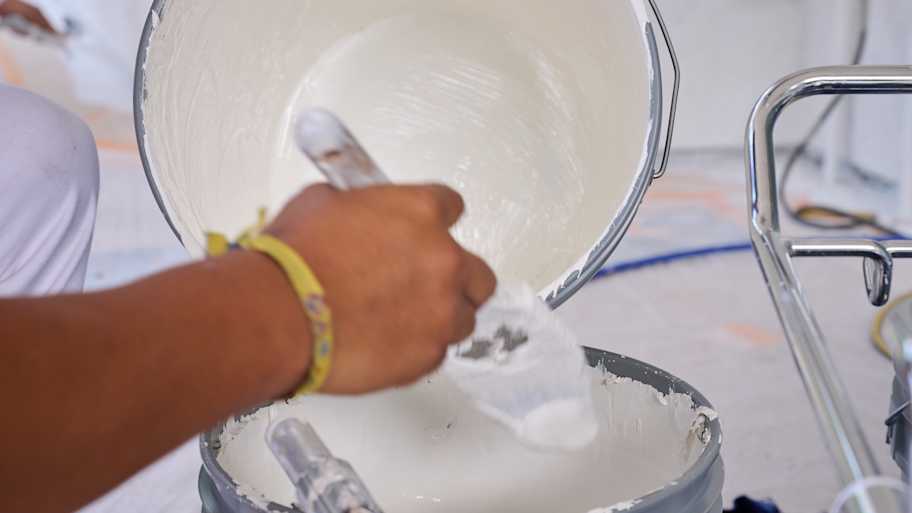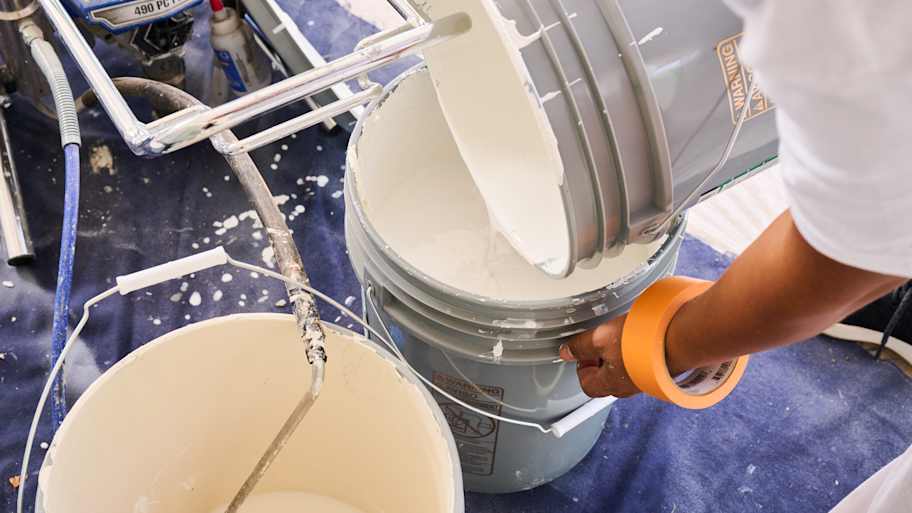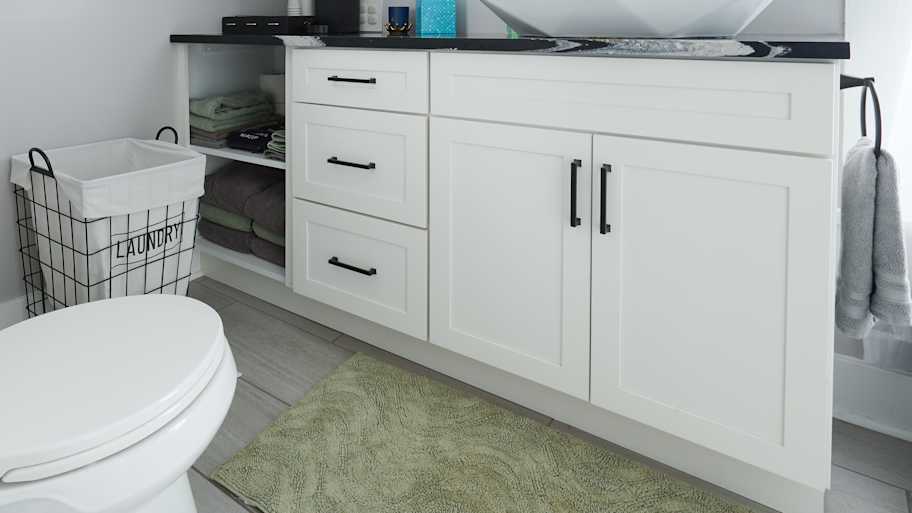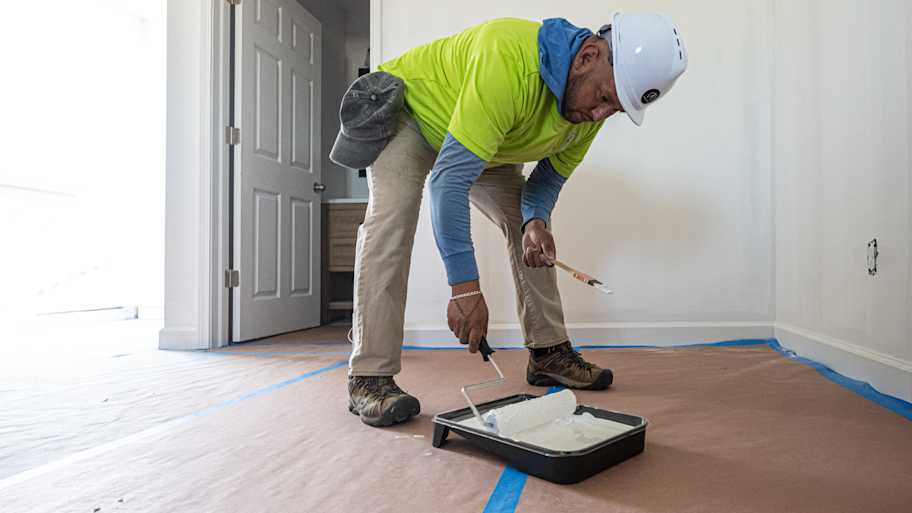Ceiling Paint Need A Refresh? Here's How to Fix It and Leave It Looking Like New
Michelangelo who? Here's how to paint your ceiling like a pro


- Microfiber cloth or mop
- Rags
- Safety glasses
- Shop vacuum
- Utility knife
- Spackle
- 2-inch painter’s tape
- Primer
- Paint
A damaged, discolored, or water-stained ceiling can make an otherwise well-maintained room look dark or dingy. While spending a day painting your ceiling may rank pretty low on the things you want to tackle from your to-do list, giving your ceiling a refresh can make a big impact on your living space. Even better yet, depending on the size of the room, it’s likely a task you can complete in a weekend.
If you’d rather outsource painting or there is an ongoing issue with your ceiling—like excessively damaged drywall, water damage, or mold—you may want to hire a local painting or remediation professional. You can expect to pay $360 to $1,260 to have a damaged ceiling repaired and $954 to $2,893 for a pro to paint your home's interior.
Prepping to Paint a Damaged Ceiling
Before you can start adding paint to the ceiling, you need to address whatever caused the damage in the first place. Otherwise, there’s nothing stopping your fresh paint job from being ruined in the future.
Common Sources of Ceiling Damage
Some of the most common sources of water stains on a ceiling are leaks in an upstairs bathroom or laundry room, or from your roof. You can verify if these are causing issues by checking for signs of leaking at the source. Check under your bathroom sink, around your vanity, and near the base of your toilet in the bathroom. Moisture at any of these sources may be an indication that you have a leak. If you’re unsure, call in a local plumber to take a look for you.
If you think your roof may be the issue, you can check for obvious signs of damage to your shingles or look to see if your gutters or downspouts have become clogged, causing rainwater to flow back into your home. If you’re uncomfortable getting up on a ladder to check for yourself, consider hiring a handyperson to come out and do it for you. You can expect to pay $60 to $125 per hour.
5 Steps to Painting a Damaged Ceiling
Now that you have your gear, it’s time to get started.
Find and Fix Problems
If you’re painting over water stains, you’ll want to make sure that you’ve fixed whatever caused the damage in the first place. Water stains and water damage should be assessed and repaired so that the problem doesn’t soak through a fresh coat of paint or create bigger, more costly issues down the line.
Prep the Room for Painting
Most of what makes a professional paint job look so professional is the prep work they do before starting. Covering your flooring and furniture, cleaning up any cobwebs or dirt, and taping off any light fixtures, vents, or other areas where you don’t want to get paint, will not only make your paint job look neater, but it will also make cleaning up afterward a breeze. Check off these steps to ensure your room is fully prepped to paint:
Remove furniture, wall hangings, and other decor items from the room.
Protect the floor and any remaining furniture by laying down a drop cloth.
Wear your safety goggles to protect your eyes from falling debris or paint splatters.
Wipe the ceiling and areas you’ll be taping off down with a cloth or mop to ensure both the paint and the tape will stick.
Repair damaged areas before applying paint.
Tape off ceiling fixtures, vents, and the walls.
Prime the Ceiling and Cut-Ins
Give your ceiling a good base by applying an even coat of primer before using your paint. You can use the paintbrush to cut out corners, cover the edges of where you’ve used your painter’s tape, and around light fixtures or vents. For the best results, use an interior drywall latex primer on ceilings that are smooth or lightly textured and a high-build primer for ceilings with more texture. Here’s how to prime the ceiling like a pro:
Apply your primer in small patches and in multiple directions to ensure you’re applying your paint evenly.
If your ceiling is smooth to moderately textured, you should use a low nap roller. Higher textured ceilings are best painted with a roller that has a 1/2-inch or 3/4-inch nap.
Start in a corner and then roll the paint out so that your rolls are overlapping to prevent obvious lines.
Follow the dry time requirements listed on your can of primer.
Paint the Ceiling and Cut-ins
After your primer has dried, you’ll need to repeat the process from step 3 with your paint. Unlike in the previous step, you may find yourself needing to apply more than one coat. This is especially true if you've decided to change the color of your ceiling significantly or if any water stains are showing through.
Apply your paint in small patches with the roller strokes going the same direction to ensure you’re applying your paint evenly.
Start in a corner and then roll the paint out so that your rolls are overlapping to prevent obvious lines.
Follow the dry time requirements listed on your can of paint before applying any additional coats.
Clean-Up and Disposal
One of the perks of hiring a professional is that you don’t have to do the clean-up. However, if you carefully prepped your space before starting, your clean-up may already be halfway done for you.
Wash your paintbrush, roller, and paint tray in warm soapy water and let them dry completely before storing them.
Wipe up any drips or spills from around the room.
Seal any cans of paint you plan to store for future touch-ups. You can use a mallet or hammer to gently tap the lid of the paint and secure it to prevent the paint from drying out.
Check your local municipality to determine if you need to do anything special to dispose of your painting supplies. Some areas require that you drop any items with paint at a disposable center.
After the paint has dried, you can remove and throw away your painter’s tape, remove your drop cloths, and return furniture and photos to their original spaces.



















